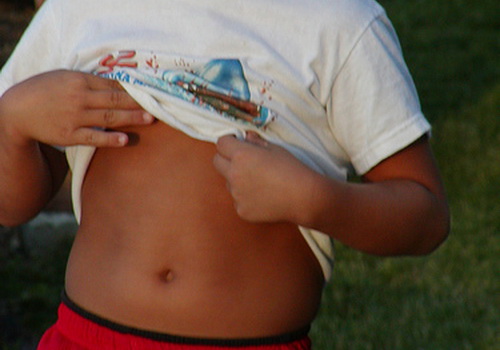
Abdominal pain overview
Abdominal pain is one of the most common reasons parents bring their children to the doctor for treatment. It is estimated that one out of three children see the doctor before they reach the age 15 because of pain occurring in the area between their chest and their groin, also known as their belly or stomach. Stomachaches are often frightening to parents, especially when they are accompanied by other symptoms such as diarrhea, vomiting, or fever, but in most cases, symptoms go away within a few hours with simple home treatments. It is important, however, for parents to recognize symptoms that may suggest more serious causes, which would need immediate treatment. In addition, children may experience different types of abdominal pain that may occur occasionally, sometimes, on and off, while others may be recurrent or chronic (long-lasting). Pain may be localized to a small area, but others may involve a generalized type of abdominal pain. Although young children may not be able to verbalize the characteristics of their belly ache, parents may note that they may become fussy, lose their appetite, or sometimes double-up, by pulling their knees towards their belly. Older children may describe their stomachache as cramping or...
Abdominal pain is one of the most common reasons parents bring their children to the doctor for treatment. It is estimated that one out of three children see the doctor before they reach the age 15 because of pain occurring in the area between their chest and their groin, also known as their belly or stomach. Stomachaches are often frightening to parents, especially when they are accompanied by other symptoms such as diarrhea, vomiting, or fever, but in most cases, symptoms go away within a few hours with simple home treatments. It is important, however, for parents to recognize symptoms that may suggest more serious causes, which would need immediate treatment. In addition, children may experience different types of abdominal pain that may occur occasionally, sometimes, on and off, while others may be recurrent or chronic (long-lasting). Pain may be localized to a small area, but others may involve a generalized type of abdominal pain. Although young children may not be able to verbalize the characteristics of their belly ache, parents may note that they may become fussy, lose their appetite, or sometimes double-up, by pulling their knees towards their belly. Older children may describe their stomachache as cramping or colicky type of pain, and they may be able to point where it hurts.
- Important notification about information and brand names used in this slideshow!
- Photo courtesy of Lindsey Jene Scalera by Flickr : www.flickr.com/photos/linsight/517083011/
- www.emedicinehealth.com/abdominal_pain_in_children/article_em.htm
- http://children.webmd.com/tc/abdominal-pain-age-11-and-younger-topic-overview
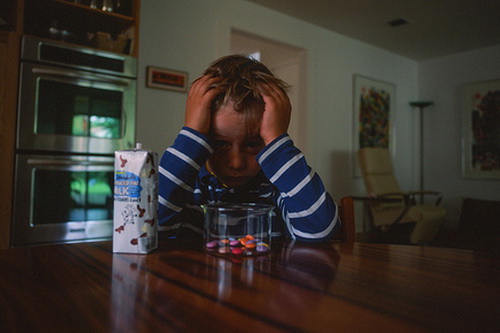
Is pain reccurent or chronic?
Most cases of acute abdominal pain in children last only for a few hours. However, in some cases, children may experience abdominal pains that are either recurrent or chronic. Recurrent abdominal pains occur at least on three separate episodes within a three-month period. The pain may be severe, but may wax and wane, and usually affects the child's normal activities. It affects up to 30 percent of children ages 4 to 12 years. Chronic abdominal pain is long lasting constant or intermittent pain. Studies show that there may be two age ranges when the incidence of chronic abdominal pain peaks - the first is at ages 4-6 years and the second peak is at ages 7-12 years. In many children, a definite organic cause for chronic or recurrent pain cannot be identified. This is called a functional abdominal pain, which is described as stomach upset which is difficult to locate or characterize, lasts for a short period, may be accompanied by other symptoms such as nausea and headache, but does not affect his growth or other body functions. However, sometimes abdominal pain may be due to organic causes, such as peptic ulcers, endometriosis (in adolescents), or urinary tract infection...
Most cases of acute abdominal pain in children last only for a few hours. However, in some cases, children may experience abdominal pains that are either recurrent or chronic. Recurrent abdominal pains occur at least on three separate episodes within a three-month period. The pain may be severe, but may wax and wane, and usually affects the child's normal activities. It affects up to 30 percent of children ages 4 to 12 years. Chronic abdominal pain is long lasting constant or intermittent pain. Studies show that there may be two age ranges when the incidence of chronic abdominal pain peaks - the first is at ages 4-6 years and the second peak is at ages 7-12 years. In many children, a definite organic cause for chronic or recurrent pain cannot be identified. This is called a functional abdominal pain, which is described as stomach upset which is difficult to locate or characterize, lasts for a short period, may be accompanied by other symptoms such as nausea and headache, but does not affect his growth or other body functions. However, sometimes abdominal pain may be due to organic causes, such as peptic ulcers, endometriosis (in adolescents), or urinary tract infection.
- Important notification about information and brand names used in this slideshow!
- Photo courtesy of Lars Plougmann by Flickr : www.flickr.com/photos/criminalintent/8885256431/
- www.ncbi.nlm.nih.gov/pmc/articles/PMC1867894/
- http://www.ncbi.nlm.nih.gov/pmc/articles/PMC2380069/
- http://www.webmd.com/pain-management/tc/recurrent-abdominal-pain-rap-topic-overview
- http://www.uptodate.com/contents/chronic-abdominal-pain-in-children-and-adolescents-beyond-the-basics
- http://www.patient.co.uk/doctor/recurrent-abdominal-pain-in-children#ref-3

Constipation in irritable bowel syndrome
Irritable bowel syndrome or IBS is a functional disorder of the intestines, which causes crampy abdominal pain in children. It also causes bloating, diarrhea, and/or constipation. IBS is a chronic problem, for which the cause is unclear. Some factors that may contribute to this problem include stress, hormonal changes, and sensitivity of the intestines to some foods. Constipation in children with IBS is intermittent, with hard, pellet-like stools. The feeling of not being able to empty the bowels leads them to strain for long periods. However, these episodes may alternate with diarrhea, or frequent loose stools, often accompanied by mucous discharge.
- Important notification about information and brand names used in this slideshow!
- Photo courtesy of Juno Lee by Flickr : www.flickr.com/photos/junonamkoonglee/9373356766/
- www.webmd.com/ibs/guide/irritable-bowel-syndrome-ibs-topic-overview
- http://www.uptodate.com/contents/irritable-bowel-syndrome-beyond-the-basics?source=see_link
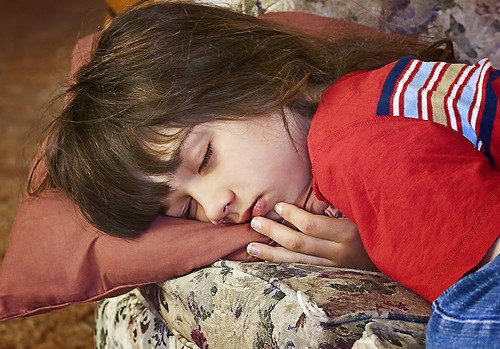
Food poisoning
Food poisoning is a very common condition that is sometimes life threatening for all people, young and old. There are hundreds of microorganisms that can cause contamination and food poisoning. Some of the most common ones include Salmonella, Campylobacter, Shigella, Listeria, E. coli O157:H7, and botulinum. Children can also get food poisoning from viruses, parasites, and chemicals in food. Symptoms of food poisoning include cramping abdominal pain, diarrhea, nausea, and vomiting. More serious symptoms include body weakness, confusion, numbness, or tingling of the hands, feet, and face. Severe diarrhea and vomiting may also lead to dehydration, which can be life threatening if not treated immediately.
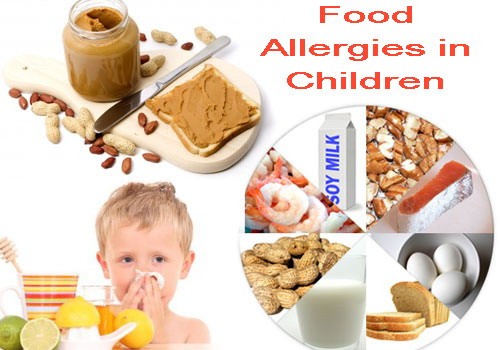
Food allergies
Children who suffer from food allergies may experience mild to severe symptoms that may range from skin rashes, to upset stomach and diarrhea. Abdominal may cause them to cry a lot, vomit, and become dizzy. This condition often runs in families and may be triggered by eating certain foods like milk, soy or eggs. Children often outgrow their sensitivity to these foods while they grow, but others may have it for the rest of their lives. Children who suffer from asthma, eczema, or hay fever are more likely to experience food allergies. This condition must be distinguished from food intolerance, which may also cause stomach upset, but is less dangerous than a true allergic reaction.
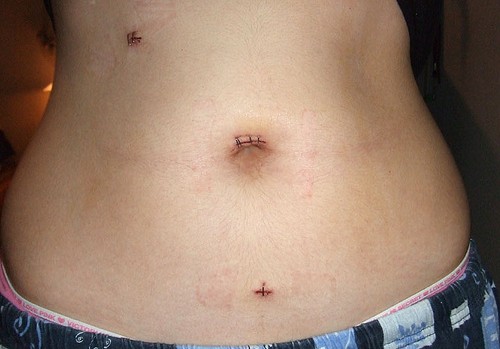
Appendicitis
Inflammation of the appendix, a small outpouching from the large intestine, can cause severe abdominal pain in children. It is a very common condition that affects children as young as two years old and adults as old as 30. However, the incidence of appendicitis is highest between ages 10 to 19 years. Appendicitis usually occurs when the appendix is blocked by food, feces or foreign objects. This causes acute inflammation, which causes abdominal that begins near the child's navel or upper portion of the abdomen but later localizes in the right lower abdomen. This is often accompanied by loss of appetite, high fever, nausea, vomiting, and abdominal swelling. A child who has these symptoms bust be given immediate medical attention.
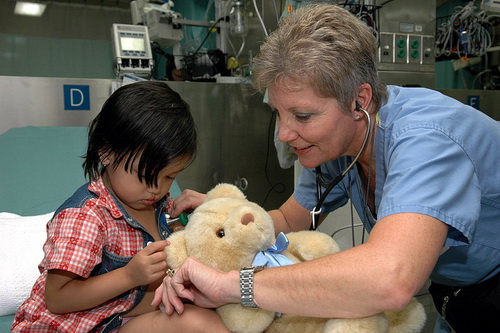
Crohn's disease or ulcerative colitis
Crohn's disease is one of the possible causes of abdominal pain in children that is marked by chronic inflammation and ulceration of the digestive tract. This condition, also called ulcerative colitis, may occur at any age, but it is most commonly diagnosed between the ages of 15 to 30. Aside from abdominal pain and tenderness, symptoms include chronic diarrhea, fever, weight loss, and rectal bleeding. Children may experience periods of remission, when they may have no symptoms for weeks or even years, only for the symptoms to return again. The exact cause of Crohn's disease is unknown but it tends to have a familial tendency and may involve abnormal responses of the immune system.
- Important notification about information and brand names used in this slideshow!
- Photo courtesy of U.S. Navy photo by Photographer's Mate 2nd Class Erika N. Jones by Wikimedia Commons : commons.wikimedia.org/wiki/File:US_Navy_060603-N-3714J-020_Project_Hope_nurse,_Diane_Speranza_listens_to_a_child's_heartbeat_while_taking_her_v
- www.webmd.com/ibd-crohns-disease/crohns-disease/tc/crohns-disease-topic-overview
- http://www.emedicinehealth.com/crohn_disease/article_em.htm
- http://www.webmd.com/ibd-crohns-disease/crohns-disease/crohns-disease-in-children-and-teens?vm=r&s=1
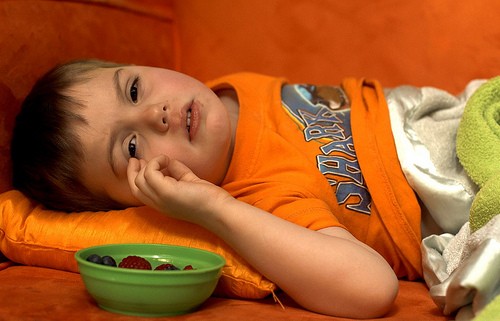
Home care for abdominal pain
Most children with abdominal pain with get better with home care. They may be encouraged to rest and lie down until the stomachache goes away. They may be given a few sips of clear liquids, such as water, diluted fruit juice, tea, or broth. It is best to avoid giving them coffee, carbonated beverages, or milk. Parents may also encourage their children to try to pass a stool to relieve their stomachache. Children with abdominal pain must not be given aspirin, pain relievers, or antibiotics without first consulting a physician. Solid foods like banana, crackers, and cooked rice may be given slowly when their symptoms improve.
- Important notification about information and brand names used in this slideshow!
- Photo courtesy of sean dreilinger by Flickr : www.flickr.com/photos/seandreilinger/4769982833/
- children.webmd.com/tc/abdominal-pain-age-11-and-younger-home-treatment
- http://www.nlm.nih.gov/medlineplus/ency/article/007504.htm
- http://www.emedicinehealth.com/abdominal_pain_in_children/page5_em.htm#abdominal_pain_in_children_home_remedies
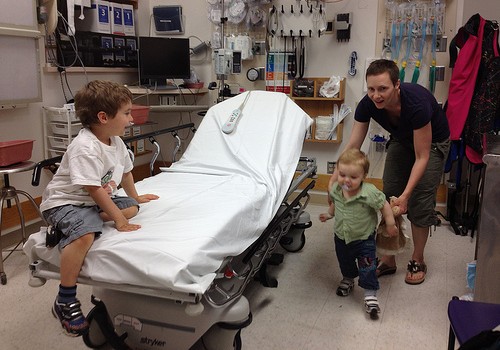
When to seek help?
Parents or caregivers must immediately seek help for their children if their symptoms do not improve within 24 hours. However, they do not have to wait for a day to pass, especially if the child is experiencing a sudden, sharp pain or has a rigid abdomen. Other reasons to seek immediate medical help or call 911 include a child having trouble breathing, a recent abdominal injury, vomiting blood, blood in stool, or if a baby younger than three months is vomiting or having diarrhea. It is also advisable to call a doctor when the child has high fever (100.4 degrees F or higher), painful urination, chronic poor appetite, and unexplained weight loss.
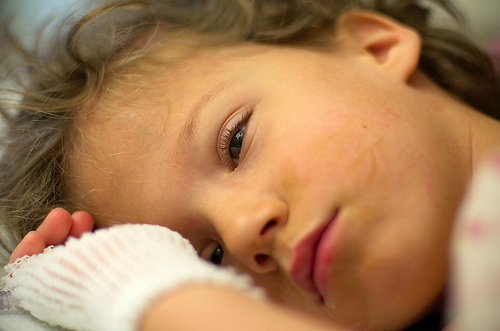
Urinary tract infections
Urinary tract infections are common among children, especially girls. About 80% of girls and 20% of boys will experience having an infection in the urinary tract at some point in their childhood. These infections may be caused by harmful microorganisms originating from the stool, which may contaminate their urinary tract. This condition may cause lower abdominal pain, lack of appetite, fever, and vomiting. Other clues that may lead a parent to suspect a urinary tract infection in the child include increase in the frequency of urination, painful urination, and foul-smelling urine. It is advisable to seek medical help immediately to prevent widespread infection and recurrent infections.
- Important notification about information and brand names used in this slideshow!
- Photo courtesy of Philip Dean by Flickr : www.flickr.com/photos/phild41/6297179015/
- www.webmd.com/hw-popup/urinary-tract-infections-in-children
- http://www.emedicinehealth.com/urinary_tract_infections_in_children-health/article_em.htm
- http://www.emedicinehealth.com/script/main/art.asp?articlekey=134901&ref=134899



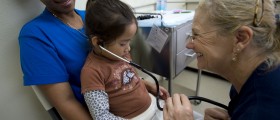



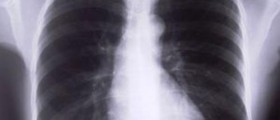







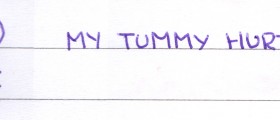









Your thoughts on this
Loading...